Free Influencer Marketing Series
Success! Enjoy the series! Part 1: How an agency took a brand from 0 to $1MM in 4 months using influencers & ads
Free Influencer Marketing Series
Success! Enjoy the series! Part 1: How an agency took a brand from 0 to $1MM in 4 months using influencers & ads

Can influencer gifting work for you?
Sending free product gifts to influencers is proven to drive results. It builds awareness, creates engagement, and produces user-generated content. Product gifting can even spark long-term influencer relationships. All for the cost of product, packaging, and shipping.
But it doesn't work for all products. Learn if your brand is a good fit for gifting, how to select the right influencers, and how to send gifts to make influencers want to recommend your product.
"Influencer Gifting" is a marketing tactic where companies provide free products to chosen influencers. The objective is for these influencers to use and enjoy the products, and then share the positive experiences with their followers.
Gifting is cost-effective as there is no financial compensation for the influencer. It’s a trade: a free product in return for potential positive exposure and content.
Since it’s a gift, influencers are under no obligation to promote the product. They have the freedom to decide what to do with it.
However, most influencers understand the implied expectation of product promotion that comes with gifting.
If you're hoping for a high rate of influencers posting, don't confuse product gifting with product seeding, a similar approach that has different goals and outcomes.
We'll go into more detail below, but here's the quick version:
Look at it like this. You pay only your cost for the product, packaging, and shipping. Then you might get some free promotion from an influencer, perhaps in the form of an unboxing haul or a quick mention in an Instagram Story.
The more mentions you get, the higher your ROI.
Win-win, right?
How does sending free products to influencers generate a positive return for your brand?
Here are three ways to show the ROI of product gifting:
Awareness. Compare the cost per mille (CPM) of your product gifting campaign to your other targeted awareness tactics.
Engagement. Compare the cost per engagement (CPE) of product gifting to your other engagement tactics.
Content creation. Compare the cost and effectiveness of influencer-generated content to other sources of content, such as in-house content production or off-site photo shoots. Some brands find influencer-generated content outperforms in-house generated content in ads due to the variety and authenticity.
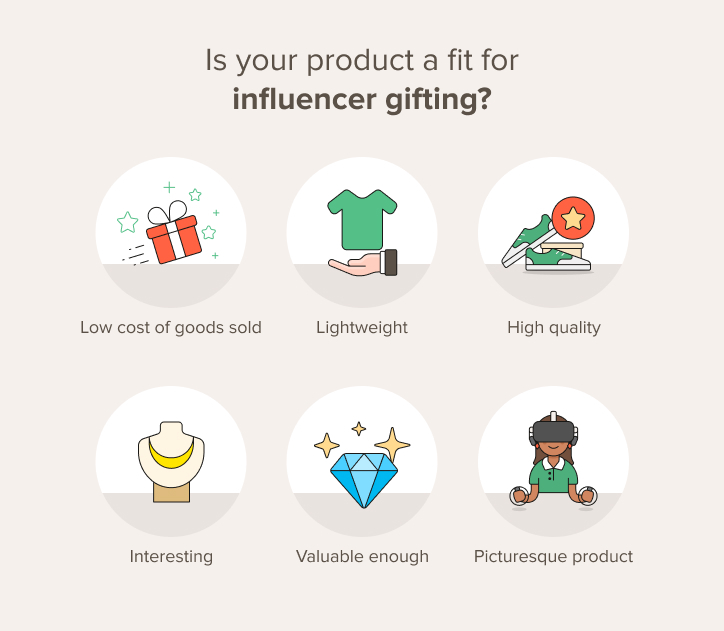
Before we dive deeper, let’s make sure your product has the right characteristics for successful product gifting.
Low cost of goods sold (COGS). To get a positive return on your investment, it helps to have a low cost of goods sold (COGS).
Some commonly gifted items include: personal care products, beauty products, food, health and wellness products, fashion, consumer goods, and adult beverages. Factor your product gift cost into your ROI assumptions and calculate what gift value you can afford to send and what results need to achieve positive ROI.
Lightweight product. There’s a reason why product gifting is popular for beauty and personal care, consumer packaged goods, and gaming industries. These tend to be lighter weight products–and that helps keep your shipping costs down.
Some heavier products can still be successfully gifted. For example, adult beverage brands are popular gifts among influencers. If you have a heavier product, get creative to minimize shipping and packaging costs. Consider shipping two bottles of wine instead of four and add a gift card if you need to boost the gift value.
High quality product. Gifting works best for products that are high quality and loved by users. Influencers will not recommend your product if they don’t enjoy it.
Interesting product. Is your product one influencers will want to talk about? One that their audiences will want to hear about? A generic toilet seat? Probably won’t cut it. The influencer needs to be able to tell a story about how this product fits into their life.
Valuable trade. A $2 clear plastic soap holder will not excite an influencer enough to put forth creative effort.
But what value should the influencer gift be?
We asked Jillian Salamon, VP of Campaign Operations at ApexDrop who has worked with hundreds of brands on product gifting campaigns. Here's her take: "The value of your product gift should not matter IF you are gifting to your fans. If they love you, they're going to talk about you! If you're working with micro or nano influencers who have already shown signs of brand affinity, then budget $60 to $75. However, if you're seeking out mega or celeb influencers, even if they love your brand, it's likely going to take more to get them on board with a gifted post. Be prepared to send high follower accounts at least $200 worth of products to maximize the take rate (the likelihood of them creating and sharing content about it)."
Picturesque product. A product with visual appeal has a significant advantage for influencer gifting. Eye-catching aesthetics naturally invite more shares and likes on social media, thereby increasing visibility.
"Influencers are more likely to promote picturesque products that look great in images and videos," agrees Aaron Kozinets, Founder of Influence Hunter. "It's important to make the packaging of your influencer gift attractive too. You'll make a great first impression and possibly even score an unboxing video."
Why consider gifting as a part of your influencer marketing plan? Here are a few benefits influencer gifting can provide your business:
Earn low-cost promotion: Influencer gifting encourages social mentions for your business from micro influencers and nano influencers who are often willing to create and share content in exchange for product gifts.
Produce UGC: Collect the influencers' images and videos and use the influencer content as UGC on your brand's social media accounts and for ad creatives, after securing permission from the influencer.
Reach new audiences: Find new and aligned audiences through each influencer you partner with. An introduction from a trusted influencer is powerful social proof.
Increase awareness and sales potential: The more promotion your product gets, the more people are aware and trusting of your brand. This can help reduce your Customer Acquisition Cost (CAC).
Build brand-influencer relationships: Even though gifting is transactional in terms of providing a creative brief and posting suggestions, some brands are able to start longer term influencer partnerships through gifting. Use your gifting campaigns to identify influencers who love your brand and invite them to a longer-term relationship such as a brand ambassador or influencer affiliate.
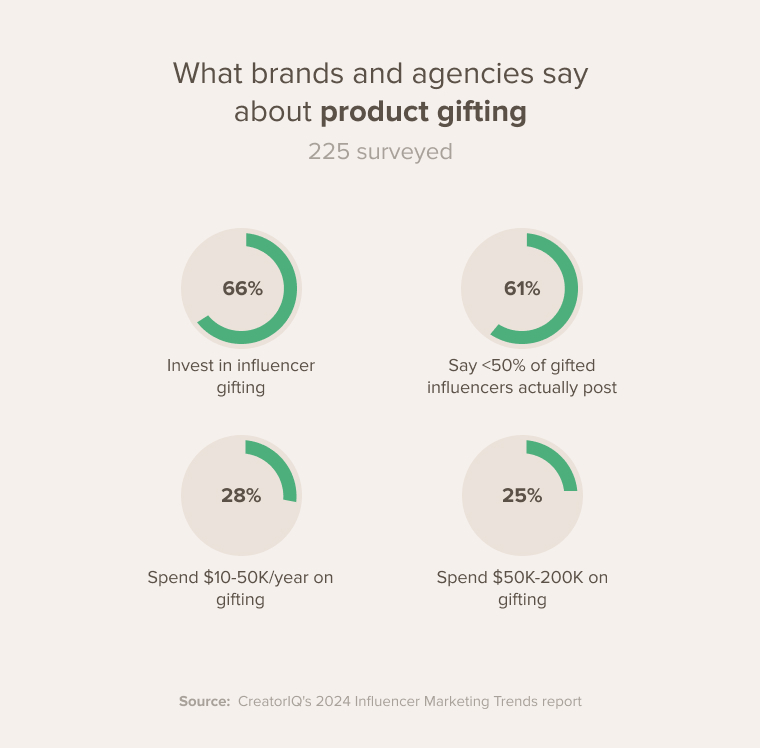
As with other marketing strategies, the state of influencer gifting changes from year to year. So what does influencer gifting look like in 2024?
According to Traackr’s Influencer Gifting report, this strategy isn’t going away. Posts mentioning “gifted” are up 87% year-over-year on TikTok.
In addition, CreatorIQ’s 2024 Influencer Marketing Trends report showed that 66% of marketers invest in influencer gifting.
Marketers are dedicating sizable budgets, with 28% spending $10k-50k on influencer gifting and another 25% spending $50k-200k.
92% of marketers agree that gifting products has increased their brand awareness and 76% say it has led to sales. Many brands will include discount codes that influencers can share to improve the likelihood that a viewer will make a purchase.
61% of marketers say that less than half of the influencers they gifted will actually post the product on social media.
In Salamon's experience, brands that manage product gifting in-house report a 20 to 50% success rate of influencers posting after receiving a gift. She adds, "That's a huge range and it might feel discouraging. To increase the likelihood of posting, find influencers who are already your fans. Are they following you on socials? Have they purchased your product in the past? Do they have a a smaller following? Are they already doing gifted partnerships?"
Similarly, influencer Naomi Hearts recommends brands really pay attention to the influencers they’re gifting. Only sending hyper-relevant products out as gifts. Hearts says, “If I like the product, I’ll be more likely to post about it and my audience will be able to feel my excitement.”
Ready to run your own influencer gifting campaign? Let’s go through each step you’ll take across four main phases.
The first phase in your new influencer gifting campaign is the prep work. Finding your audience, setting goals, and creating a budget. Let’s walk through each of those tasks in more detail.
Identify target audience. Who is your brand’s target audience? Where do they live? What is their age and gender? What are their interests? The beauty of micro and nano influencers is there are accounts for every type of interest, lifestyle, and hobby available.
Set goals, KPIs, and other clear objectives. What are you hoping to achieve through your influencer gifting campaign? While not all influencers will share your product, estimate the number of influencers who will. Set a goal(s) using the list below for inspiration.
Common goals for influencer gifting campaigns include:
Build brand awareness
Engage with your target audience
Build new product awareness
Collect user-generated content (UGC)
Increase your social media followers
What KPIs will you track?
We asked gifting expert Aaron Kozinets what KPIs are tracked for product gifting campaigns. Based on his experiences, "There is no right answer to the KPI question. But the most common KPIs for product gifting are: engagement, impressions, media value, quality of content, discount code usage, and CPM."
Learn more about CPM in our guide.
Kozinets added he does not recommend gifting when your goals are conversion-related. But he adds, the awareness generated by product gifting can help reduce your Customer Acquisition Cost.
Set a budget. The last step of the preparation phase is to set a budget. Decide how many influencers are needed to help you reach your goal. Or, if you have a fixed budget, determine the maximum number of products you can afford to send out.
Here’s what to include in your influencer gifting budget:
You may want to start small for your first campaign to see what your results look like, get the learnings on a smaller scale, and make sure this strategy is worth it.
Next, you’ll move onto phase two which is all about finding and reaching out to the best influencers for your campaign.
Segment your audience and influencers. You’ve already identified the audience you want to reach, and perhaps some segments to test. Now, match those segments up to influencers you’re interested in working with.
For example, a skincare brand can target influencers in a variety of niches: beauty, lifestyle, moms, health and wellness, clean living, etc. One of these niches may outperform the others. How will you know? Will you take an educated guess? Or, will you select influencers from each niche and test them? Our recommendation is to start broad and test the niches.
Choose the right influencers. Time to select the influencers! Do a deeper dive into each influencer's content for brand alignment, into their audience metrics for audience alignment, and engagement levels to decide which ones to work with.
Take a look at details like:
How aligned their audience is with your target audience
How aligned their messaging is with your messaging
How much engagement their content receives
If their engagement leans more positive than negative
If they’re responsive to follower comments
Do they tend to post gifted products
The quality of their gifted product posts
Does their audience engage with their gifted content?
Then compile your list of influencers so that you can begin reaching out to each one.
Leverage technology. Influencer marketing software tools can help with all of the above. You don’t have to use a tool if you’re first starting out with a few influencers. But you will need the help of automation as you start to work with dozens of influencers.
Tools exist to help with all parts of the influencer marketing process from discovering and vetting influencers, to communicating with them and shipping products.
Tools can help after the launch too. A content tracking tool like MightyScout will be your best friend, alerting you to gifted posts and auto-capturing all the valuable influencer posts and Stories so you don’t have to check influencer posts every 24 hours for the next month.
Then when it's time to show the ROI? Tools can help with that too.
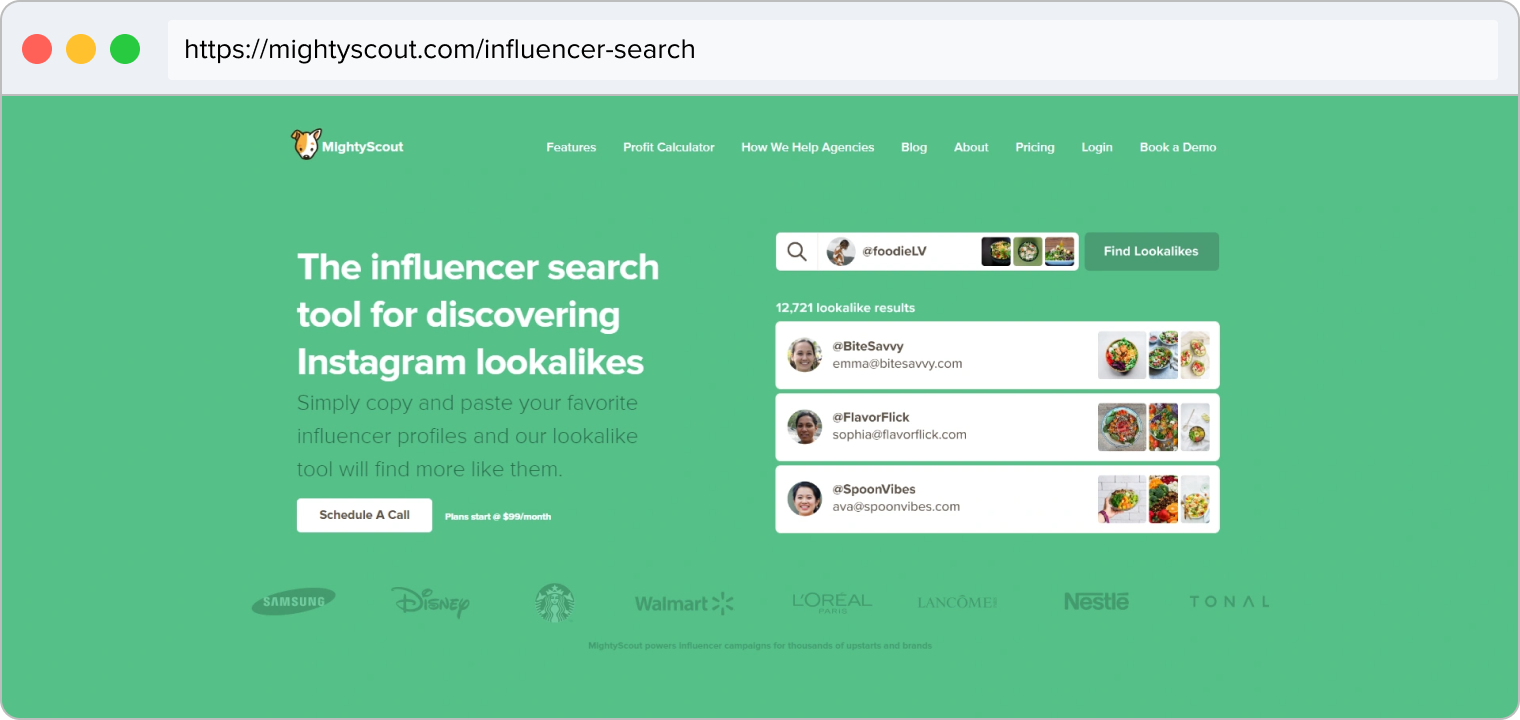
Utilize outreach best practices. Finally, time to start reaching out to the influencers you've identified. Make sure you’re following best practices to increase the chances that the influencers you want to work with get back to you.
Some of these best practices include:
Be open and transparent: Influencers are constantly inundated with emails and offers. You need to make yours stand out by immediately proving you’re trustworthy and reaching out with a legitimate offer.
Email from a real person’s account: Don’t use a generic contact email. Choose someone on your marketing team to be the point of contact. Use their real name and information so the influencer can easily look them up and verify their details.
Talk the influencer up: Tell the person why you reached out to them specifically. Let them know what you love about their account and their content. Make them excited to work with you.
Ask if they accept product gifts: Make sure the influencer accepts gifts from brands before you put any further time and effort into the campaign.
Let the influencer know you don’t expect anything: When you’re only doing a gifting campaign, you can’t expect a post from every influencer.
Introduce them to your brand: Explain your product, why you think it’d be a great fit for the influencer, and why you think your brand would be a great fit for them and their audience.
End with some kind of call-to-action: In this type of campaign outreach, you’re asking if the influencer is interested in receiving a gift, and if so, where you can send the gift. Be clear how to move forward with your brand.
Phase three is all about collaborating properly with the influencers who opt in to receive your product gift.
Offer collaboration ideas that match the influencer’s style and personality. Once you’ve gotten approval from the influencer to send the product, put together a packet with content ideas, messaging starters, and more that are catered to each influencer’s style. Make sure you let the influencer know that you’re being helpful in case they do decide to post.
You want to give the influencer as much creative freedom as possible, while providing some guidance to improve the chance that the influencer will promote your product.
Ensure legal compliance. Even gifted products need to have a proper disclosure, according to the Federal Trade Commission Thanking the brand for the gift prominently in the caption is enough for a static post. But the influencer can also include a verbal disclaimer within a video that the product was sent to them as a gift. Check the latest guidelines from the FTC for influencers.
Include legal compliance guidelines within your email correspondence so the influencer knows the proper protocol should they decide to mention your product on social media.
Make your product packaging exciting and personalized. One way to get your influencer partners excited about your product is to jazz it up with fun product packaging. A packaging company like Packlane can bring your packaging ideas to life. Include some additional gifts and extras alongside your product to really make the influencer feel special and excited to share your product.
Take a look at this #gifted box that a publishing company sent to book influencer @emilybookedup. The main component is the new book, but the publishing company also sent some additional swag, like a sweatshirt, makeup bag, and beauty items.
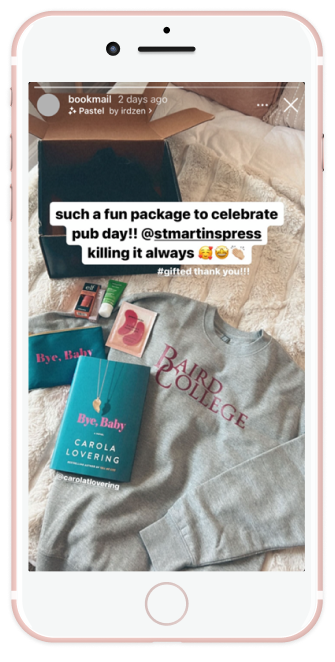
Take some notes from this. Think about what will make the box fun to open. Packaging components like confetti, stickers, and colorful tissue paper may be a fun element. However, if your brand stands for eco-friendliness, sustainability, or environmental friendliness–-or if your influencers do-–then extra packaging and paper aren’t the way to go. You’ll have to get a little more clever.
Add a personalized note to the influencer that makes them feel good and makes them even more likely to want to share such a fun package with their audience.
Ship your products. Now it’s time to ship out your products to each influencer. Make sure to get tracking numbers for each package. Not only does this allow influencers to keep track of when the package will arrive, it ensures your team can send a timely follow up to ask if they received it.
Use a trusted shipping service and don’t skimp on costs—-you don’t want packages to get damaged. And if they do, be sure to promptly re-send a new package to the influencer.
Consider using a tool like MightyScout to help your team keep track of all the gifts you’ve sent out to your influencer partners.
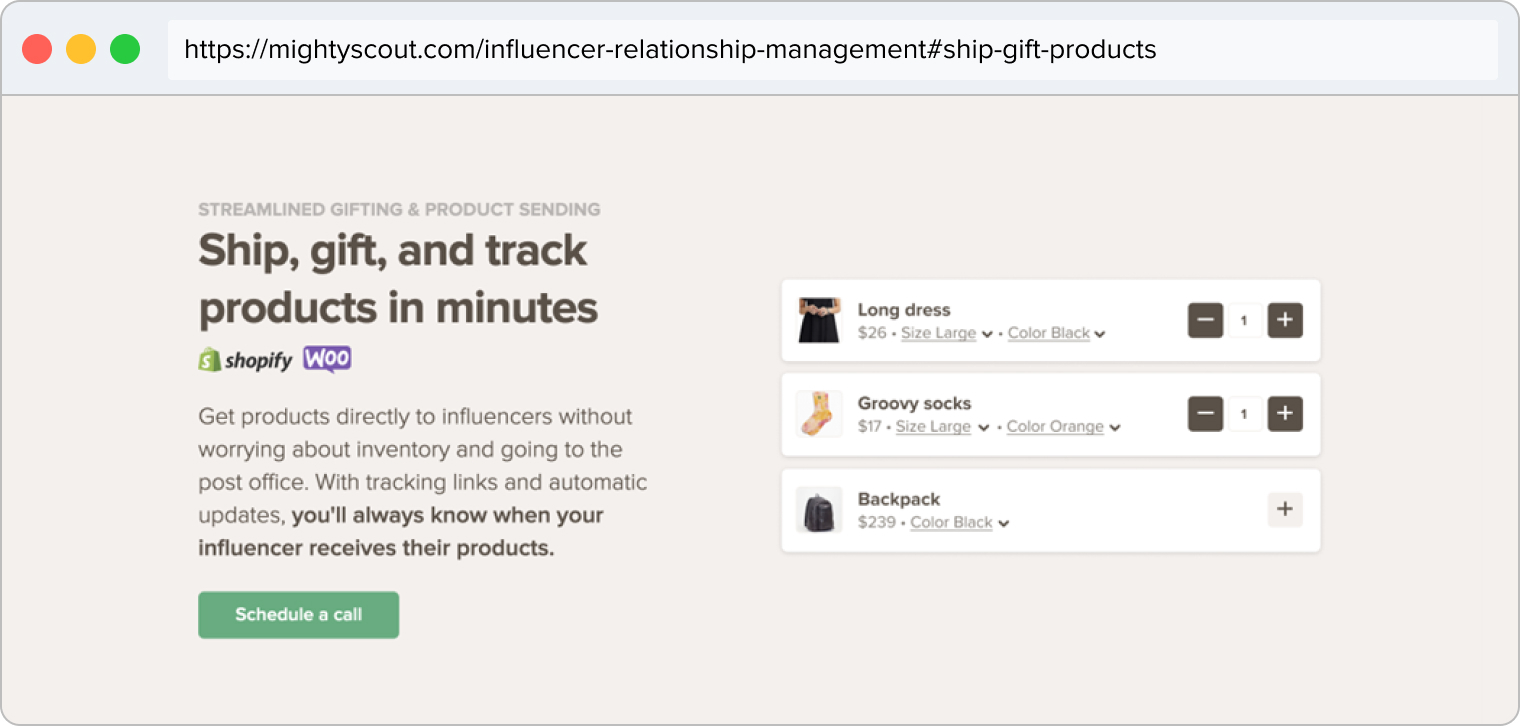
Finally, we’re into the last phase. In any campaign, we’d typically call this final phase the “launch” phase, though there’s no guaranteed content launch with an influencer gifting campaign. But “launch” still sounds better than the “waiting with bated breath” phase.
Keep an eye on influencer feeds. Start by monitoring influencer feeds or using a social listening tool to keep your ears on the ground in case any influencers decide to post. You can also ask them to message you if they decide to post, but again, you don’t want to put too much on the influencer when you’re providing no additional compensation.
So the first step in this phase is to wait, watch, and listen.
Immediately follow up with the influencer after the content goes live. Once you’ve seen a post or two go live, immediately follow up with the influencer to thank them. Let them know how much you appreciate that they shared your product and that you hope they love it. Tell them how much you loved their content.
And of course, engage with and re-share the post on your own social media feeds to further its reach. This can also help the influencer reach a wider audience, which they’ll also appreciate.
Monitor, measure, and report on performance. Monitor the performance of each post mentioning your product. How many likes, comments, and shares it got. Look through the comments to see if anyone mentioned your brand or asked questions. Feel free to pop in to respond to any questions yourself.
Measure KPIs based on your initial goals. But also pay attention to how many influencers shared your product out of the total number you sent products to. This can help you pinpoint just how successful your campaign was.
At Influence Hunter, Kozinets reports 70% is typical for the percent of influencers who create and share content after receiving a product gift. Keep in mind, 70% is typical for a product gifting agency where influencers have a relationship with the agency and are more likely to post than if a brand executed the same campaign in-house.
Incentivize or reward the influencer if the campaign went well. If an influencer’s post did particularly well, incentivize or reward them as a way of saying thank you. Consider sending a follow up product as a thank you, or add them to your list of influencers you want to partner with for your next full campaign. We have an influencer contract template that you can use at this stage.
Wondering what kind of results you can achieve with an influencer gifting campaign? Honest Paws worked with Influence Hunter to generate 900+ pieces of content and 400k+ engagements. Learn more about the Honest Paws gifting campaign.
Putting together a successful influencer gifting campaign involves much more than grabbing a list of addresses and sending out plain packages. Instead, you need to personalize your correspondence, get influencers excited about what you have to offer, and humanize the entire conversation.
Learn more about how MightyScout can help you keep your influencer gifting campaign organized through each phase of the campaign. From prep to outreach to the collab to launch, MightyScout has tools that can make the entire process easier.

Learn the strategy from seeding influencers, re-purposing content, and using cost caps in Facebook ads to find top performing influencers.